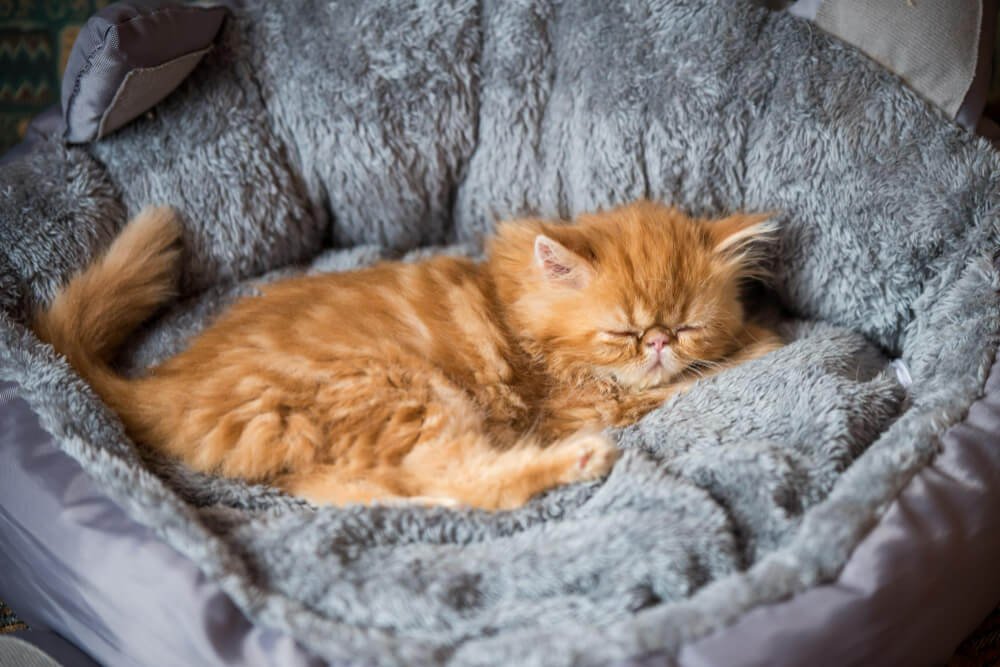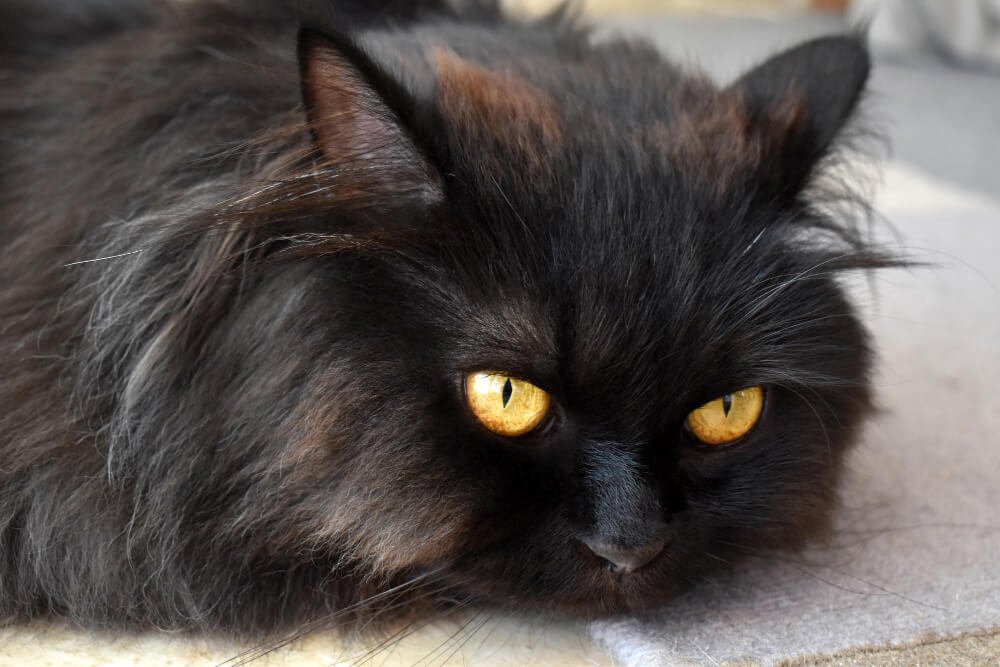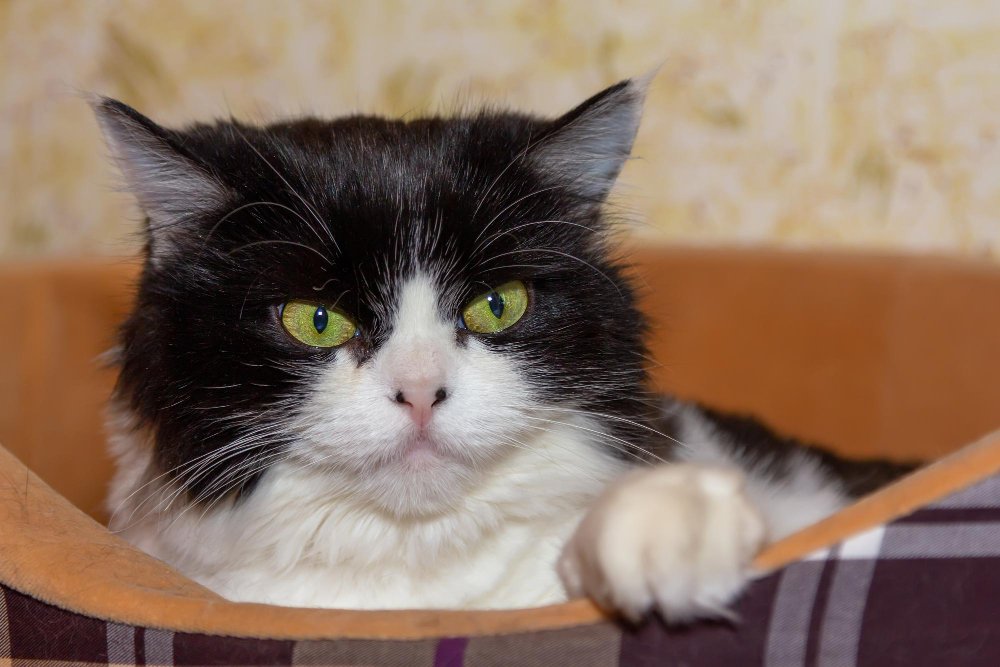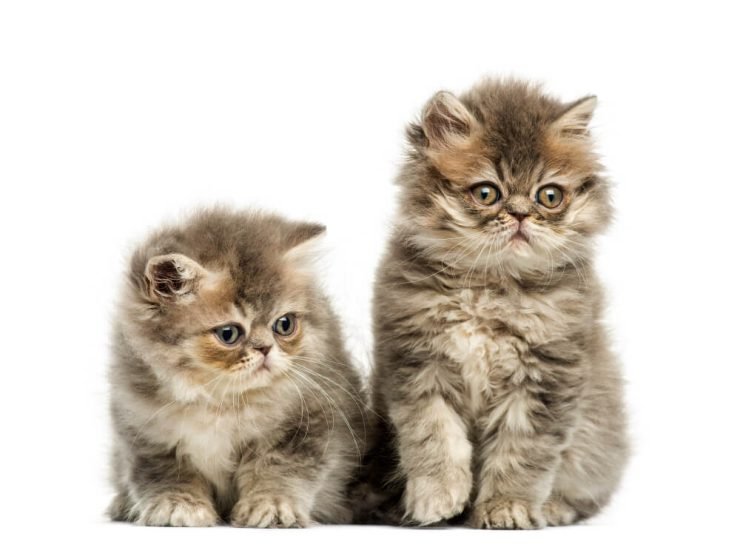We will show you everything there is to know about the Persian Cat, one of the most well-known breeds of cats in the world, in the post that we are going to show you right now.
Persians Cats Personality Traits

The Persian cats are also known as “the dog-cat” because they are so people-oriented and affectionate.
The Persian cat is an intelligent, high-maintenance, playful, yet sedentary animal that is perfect for single moms who live alone or spend most of their time at home.
What Do Persian Cats Look Like?

Persian cats are known for their long, silky fur, which comes in various colors and patterns.
The Persian breed is known for its short muzzle, large eyes, flat face, and round head with a sharp nose. The Persian coat is long and silky and comes in various colors, including white, black, brown tabby, silver tabby, and red tabby. Persians can also have solid blue or odd eyes (one blue eye and one green eye).
Persian cats need to be groomed regularly to keep their coats looking nice. They should be brushed at least twice per week with a soft-bristled brush to remove dead hair that can cause matting.
Origin of the Persian Cat

The name “Persian Cat” comes from the region in which this breed first appeared. They first gained popularity as pets in Great Britain, then quickly spread to other parts of the world. The species has traditionally been defined by having a rounded head, a small face, and an “upturned” nose standards.
Nevertheless, as is the case with certain breeds, these features, in some cases, became accentuated to an extreme degree. Consequently, there are now Persian cats who adhere to a line “traditional” mainline, meaning they do not exhibit any exaggeration in their traits. There are also Persians that exhibit similar characteristics with a little bit more emphasis.
Persian Cat Temperament

Persian cats are generally known for being quite well-mannered and calm. However, they also enjoy having fun and spending time with their instructors. They do not enjoy playing with climbing toys as other cats do. Instead, sleep and relax on the couch. Additionally, Persians are lovely with little children. However, it is crucial to tell them that they are not pets like dogs and that there will be many times when they do not want to play. Children need to understand this about the animals and not be upset by it.
These scaly ones don’t mind being on their alone for periods. But remember that no pet of any kind should ever be left home alone for extended periods. Continuing with this pattern will probably result in other difficulties, such as separation anxiety. If you are going to be away from home for an extended time, whether for business or pleasure, you should look into hiring a pet sitter to care for your little one while you are gone.
Persian Cat Health

Any cat, just like any human, is at risk of contracting a sickness, regardless of whether or not the condition runs in the family. Suppose a breeder claims their breed does not have hereditary abnormalities typical for the species. In that case, they either lie or do not have complete information about the breed. For instance, Persian cats are prone to specific inherited health issues that need to be monitored beginning with the kitten stage. These conditions include polycystic kidney disease, progressive retinal atrophy, and hypertrophic cardiomyopathy, to name just a few of them. In addition, Persian cats frequently suffer from a variety of respiratory conditions. Keeping them protected and healthy by preventing them from being exposed to excessive heat and placing them in a place with air conditioning and a cool temperature will assist.
How to Keep Your Persian Cat Happy and Healthy

Cats are among the most popular pets today. They have been around for a long time and are considered one of the oldest domesticated animals. Cats also have a variety of breeds, colors and personalities. Persian cats are one of the most popular breeds in the world.
In this article, we will talk about how to keep your Persian cat happy and healthy. We will discuss their diet, health care, grooming needs, playtime and more!
5 Tips for Living with a Persian Cat

Persian cats are known for their fluffy fur and round faces. They’re a natural breed of cat that is often called the “gentle giants” of the cat world. They are also very intelligent, making them an ideal pet for people with busy schedules.
Here are 5 tips to keep in mind when living with a Persian:
- Never feed your Persian cat raw meat or fish, as this can cause kidney and other health issues.
- Give your Persian plenty of attention and affection because they need this to feel loved and happy.
- Persian cats love to play so make sure you have plenty of toys around the house to keep them entertained!
- Persian cats should be groomed regularly to avoid matting in their fur
- Persians don’t like being dirty so make sure they have a clean litter box that is changed daily.
FAQ
Cats are one of the most popular pets in the world. They are known for their intelligence and independence. Persian cats are a specific breed known for their long, silky fur and beautiful appearance. The Persian cat is also known for its health problems.
The most common health problem in Persian cats is kidney disease. Kidney disease can lead to other health problems such as diabetes, urinary tract infections and heart failure. Some other common health problems in Persian cats include dental issues (e.g., tooth decay), deafness, epilepsy, and eye conditions (e.g., dry eye).
You can do many things to ensure your cat has a healthy life, such as giving them a high-quality diet with low carbs, avoiding processed foods, taking them to the vet at least once per year, and providing them with plenty of exercise opportunities indoors or outdoors.
The average lifespan of a cat is 12 to 15 years, but this number can vary based on the breed and lifestyle.
Many factors contribute to the longevity of a cat. The most important factor is genetics, as cats with long-haired coats live longer than short-haired cats. Other factors such as diet and lifestyle also play an essential role in their longevity.
Persian cats are not hypoallergenic because they shed their hair like any other cat. The only way to ensure that someone will not have an allergic reaction to a cat is to get a hairless breed of cat.





Add comment